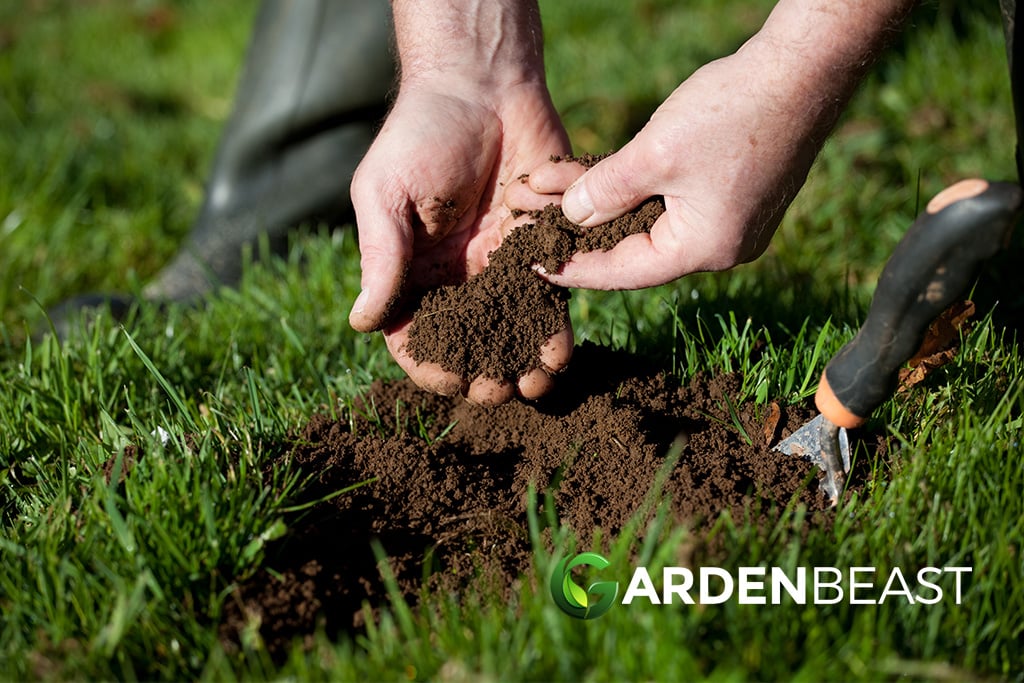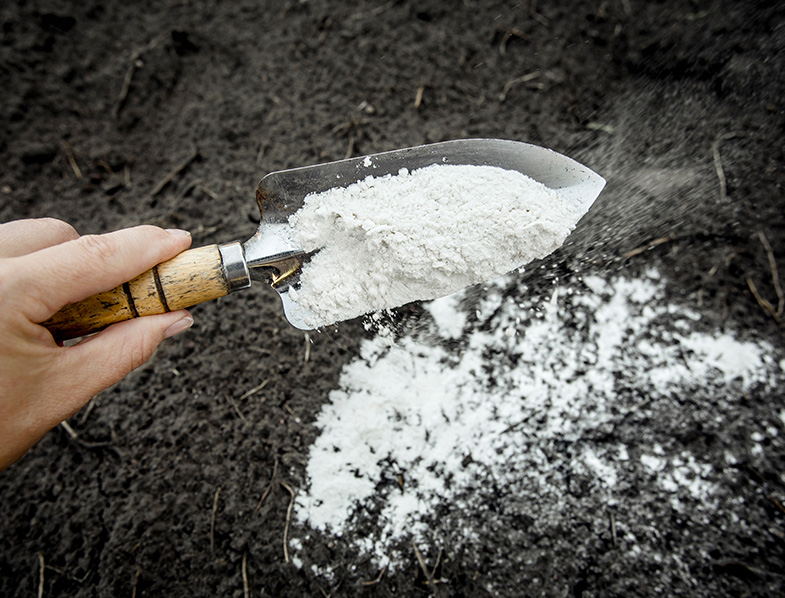Whether fruits, veggies, or flowers, when it comes to growing a successful garden, there are a lot of factors that need to be considered and components that come into play; watering, light exposure, and fertilizer are three of the primary elements that everyone pays attention to, but there’s another element that’s just as important, but that’s often overlooked: soil pH.
What exactly is soil pH and why is it so important? If you’re planning a garden, these are things that you are definitely going to want to know, so keep on reading.
What is Soil pH?
Technically speaking, pH is a gauge that measures the concentration of hydrogen-ion in a substance; “pH” is an acronym that stands for “potential Hydrogen”. In soil, pH is a measurement of the acidity or alkalinity of the soil. It is measured on a scale of 1 to 14, with 7 being the neutral mark (the halfway point between acidic and alkaline). For most plants, the ideal pH level is between 6 and 7.

Why is Soil pH Important?
So, why is soil pH important for a gardener? Because it has a direct impact on the types of plants that you will be able to successfully grow in your garden. As plants have evolved, the nutrients that they need to flourish have changed.
The pH of the soil indicates which types of nutrients in the soil are available for the plants to absorb through their root systems. If the pH is too alkaline or too acidic, the plants will get too much of certain kinds of nutrients and not enough of other types of nutrients.
If you plant your flowers, veggies, or fruits in soil that has the incorrect pH level for what the plant requires, it will not receive the nutrients that it needs, and therefore, it will not flourish; in fact, it may not survive at all.
While most plants like a pH level between 6 and 7, so a neutral pH level, some prefer more alkaline soil, and others prefer more acidic soil. With that said, if the pH level in your soil is low (it’s alkaline), yet you want to grow a plant that prefers acidic soil, you won’t be able to grow it; likewise, if your soil pH is high (it’s acidic), and you want to grow plants that like more alkaline soil, it won’t thrive in the soil.
Now, that isn’t to say that you can’t grow the plants that you want to grow in your garden if your soil pH doesn’t meet the needs of those particular species of plants. You can amend the soil to bring the pH level up or to reduce it so that you can create the ideal conditions for the fruits, veggies, or flowers that you’d like to include in your garden.
How is soil pH measured?
As mentioned above, the pH scale for soil that is used for gardening is based on a scale of 0 to 14. If the reading is under 7, the soil is acidic, and if it’s above 7, it’s alkaline. If the pH level is at a 7, the soil is neutral, meaning that it is neither acidic nor alkaline.
As indicated, most species and varieties of plants like soil that has a pH level of 6 to 7. If the soil is highly alkaline or highly acidic, it will have to be amended in order to successfully grow most plants.

How to test the soil pH in your garden
Needless to say, if you want your plants to flourish, you want to make sure that the pH level of the soil is appropriate for the types of plants that you’d like to grow. As such, before you start putting plants or seeds into the ground, testing the pH level of the soil is very important.
How can you test the pH level of your garden soil? There are three different methods that you can use:
- You can use a battery-operated tester, which can be purchased from a gardening center or from online retailers, such as Amazon or Overstock. These tools are very easy to use; simply stick the appropriate end into the ground it will measure the pH level in your soil, and will give you a digital reading on the end of the tool. It’s important to note, however, that sometimes, these tools aren’t reliable. Some models are poorly made, and therefore, they really don’t gauge an accurate measurement of the pH level.
- A better way to measure the pH level in your garden soil is by using a DIY soil pH test kit. This process is more cumbersome, yes, as it requires more work; however, it will give you a more accurate reading of the levels in your soil. Again, these test kits can be purchased at garden supply stores or from online retailers.
To run the test, take a small scoop of soil from the garden that you want to plant in. Remove any pebbles, sticks, rocks, and other debris from the soil. If the soil is clumpy, break it up so that it’s smoother. Place a small sample of the soil into the test tube that the kit came with. Mix in the chemicals that the kit came with and shake the test tube. Wait a few minutes and the chemicals will change colors. Use the chart that the kit came with to determine the pH level of your garden soil. - The best way to measure the pH level in your garden soil is by sending a sample into the horticulture or gardening cooperative extension in your local area to have it tested. Typically, most cooperative extensions will conduct a full analysis of the pH level in your soil, and they will test the nutrients in the soil, too.
Do you really have to correct soil pH?
It depends. Of course, if the plants that you are intending on growing will work with the pH level of your garden soil, you won’t need to make any changes; simply prepare the soil and get to planting. If, however, the plants that you would like to grow need a higher pH level or a lower pH level than your garden soil currently is measuring, then you’re definitely going to want to attempt to adjust the levels accordingly.
For instance, if the pH level is measuring below 7 and you want to plant flowers that prefer alkaline soil, you’ll want to try amending the soil to bring the pH level up; likewise, if the pH level is measuring above 7 and the plant prefers acidic soil, you’ll want to attempt to amend the soil to bring the pH level down.
When it comes to amending the pH level of the soil, it’s important to note that it isn’t a one-time fix. You will need to keep up on the treatments in order to maintain the ideal pH levels and growing conditions. If you don’t, the pH level will change, which means that your plants will not receive the nutrients that they need, so they won’t thrive, and they may not even survive.
How to fix soil pH imbalances
So, how do you go about adjusting imbalanced pH levels? If your garden soil is too acidic or too alkaline for the flowers, veggies, or fruits that you would like to grow, you’ll want to attempt to adjust it. It should be noted that balancing the pH level of garden soil takes time and patience; it isn’t going to change overnight, but rather, it usually takes weeks or even months to adjust.
With that said, how do you make the changes? The pH of acidic soil can be raised to increase the alkaline level by mixing in lime. The pH level of alkaline soil is reduced by mixing in some kind of sulfur. The amount of lime or sulfur that you will need to add depends on what the current pH level of your soil is, the texture of the soil (sandy, humus, or clay), and what types of plants you will be growing.

The soil test kit, tool, or the report that you receive from the cooperative extension that you sent a sample out to should let you know what you will need to do to adjust the pH level of your garden soil.
If you are attempting to amend the pH level of your soil, you’re going to want to run tests before you plant your flowers, veggies, or fruits that you would like to grow. It goes without saying but it’s worth mentioning that if you simply put the seeds or plants into the ground without testing the pH level and isn’t correct, the seeds or plants will not take, or they may take, but they will not flourish.
If you don’t want to deal with the hassle and you want to starting planting faster, you can simply skip planting directly into your garden soil. Instead, you can plant in containers or raise beds, which you can fill up with soil that has the appropriate pH level for the plants that you would like to grow.
